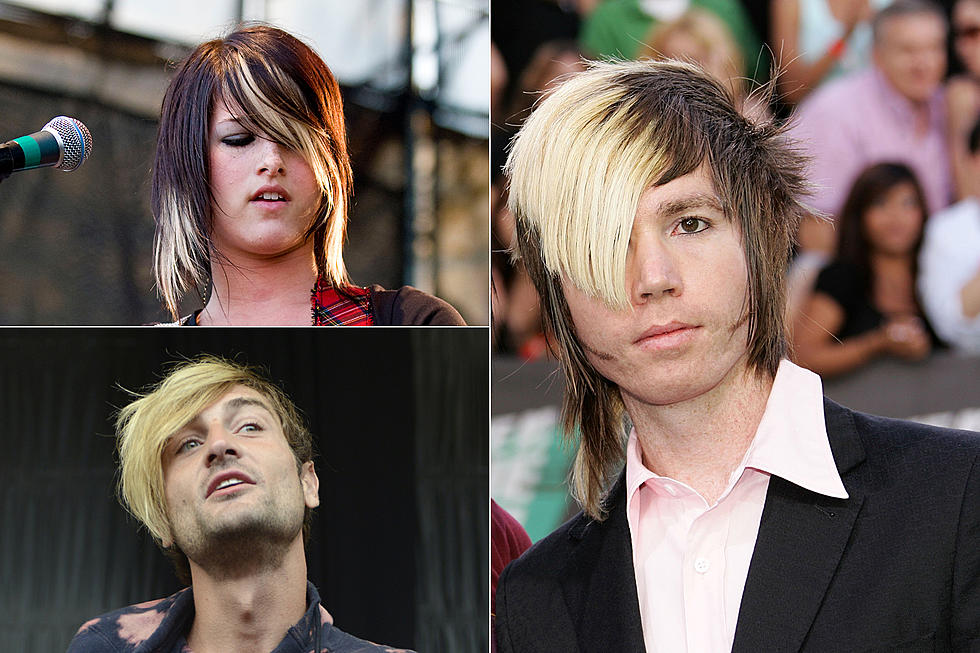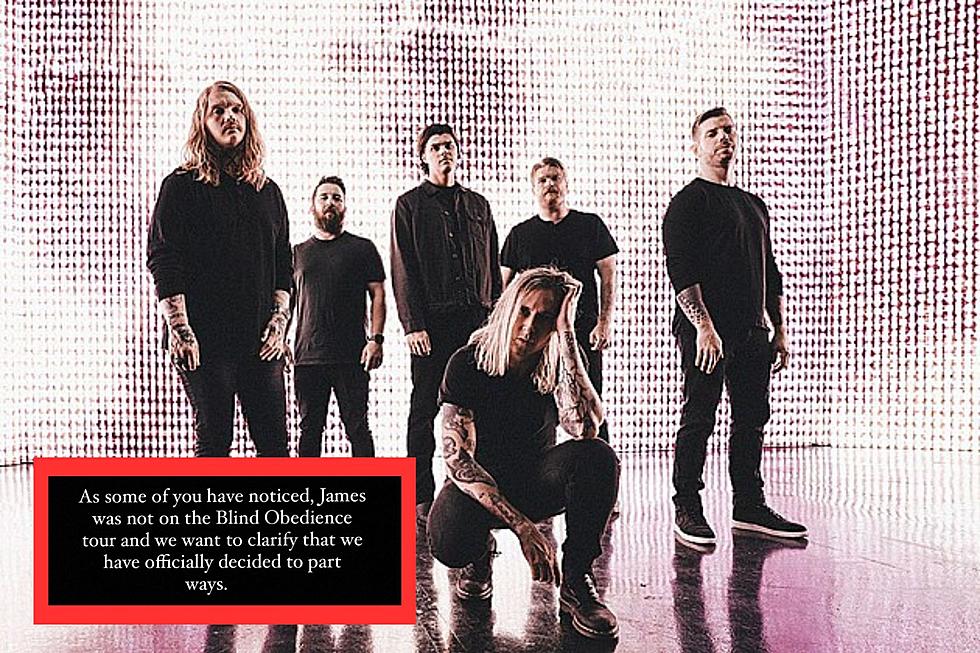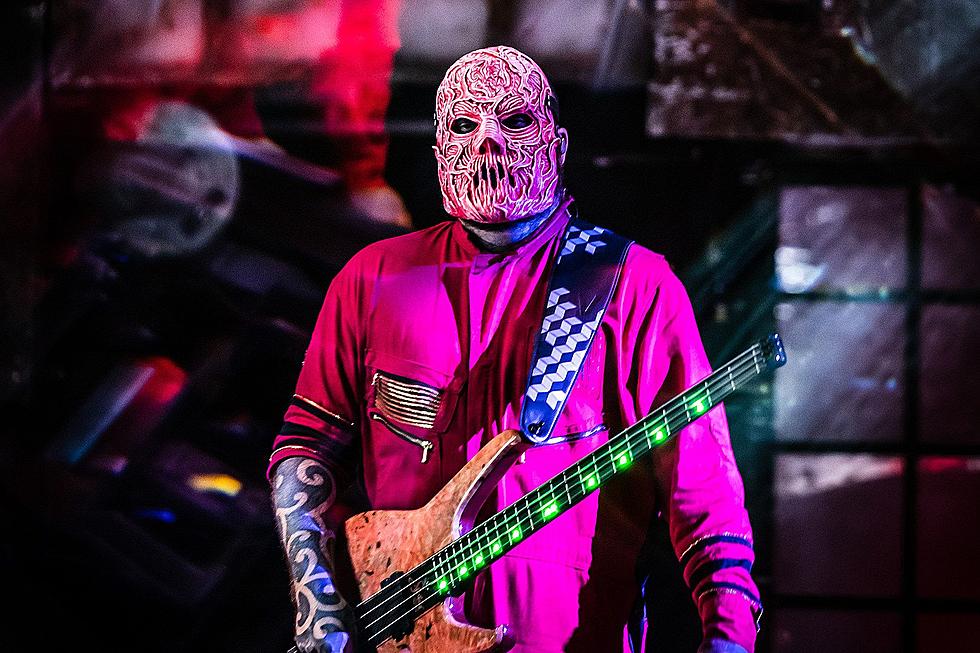
A Storm of Light Frontman Inspired by Classic Film

If you've been lucky enough to see Neurosis live, you've probably marveled at the mesmeric images that are projected during the band's droning, apocalyptic music. The artist and editor behind the film is Joshua Graham, who also designed the live visual show for Mastodon's tour in support of 'Crack the Skye.'
Aside from creating movies for live bands, Graham has worked on videos for Dillinger Escape Plan, Underoath, Jesu, Saves the Day and No Doubt. In addition, he's the frontman for the textural, post-metal band A Storm of Light and the former guitarist for Red Sparowes and Battle of Mice. But no matter what project he's wrapping his head and hands around, Graham relies on his knowledge and love of cinema to realize his artistic vision. That's why Noisecreep recently talked to Graham about the 10 movies that have been most influential to him over the years.
'Seventh Seal' (1957)
I think this is one of director Ingmar Bergman's greatest pieces. The personification of death is perfect, along with the pristine depiction of the spectrum of human emotion. This film really made me aware of emotion in cinema, and how it can affect an audience.
'The Forbidden Quest' (1993)
Directed by Peter Delpeut, this is a fictional story told with almost all found footage from the first polar expeditions. The use of this footage is striking and very heavy. The film made me realize, that through found footage, you can tell one cohesive story through any number of sources, sculpting something new out of what already exists.
'2001: A Space Odyssey' (1968)
It is rare these days that directors and audiences alike actually allow a film to breathe. Director Stanley Kubrick's patience is flawless here, and helped to create a perfect film. '2001' has been a tremendous influence on both my print work and visual work and helped me realize that sometimes the most effective way to tell a story is through simplicity.
'Hearts of Darkness: A Filmmakers Apocalypse' (1991)
Strangely enough, I think this Fax Bahr and George Hickenlooper documentary of the making of 'Apocalypse Now!' may actually be better than the film itself. This perspective into how much time and work went into the original film is an amazing story. After seeing this, I learned how chaotic and accidental film shoots can be, and sometimes that is where the best material comes from.
'La Jatee' (1962)
This is a short film directed by Chris Marker, and it consists solely of edited photographs. These images are stunning and fully hold your attention throughout the film. The story was later adapted for '12 Monkeys,' which is a great movie as well. Probably the most obvious influence of this film can be seen in my video for 'In Fiction' by Isis.
'Alphaville, a Strange Case of Lemmy Caution' (1965)
This '60s french sci-fi noir by Jean-Luc Godard influenced a lot of modern science fiction films, including 'Blade Runner' and '2001.' The imagery is amazing, and the depiction of a post-apocalyptic society is captivating. The cyclical speech patterns of the Alpha 60 computer were an influence on 'The Law of Nature' spoken word passage on our new record, 'Forgive Us Our Trespasses.'
'Mad Max 2: The Road Warrior' (1981)
Seeing this George Miller movie and its predecessor, 'Mad Max,' as a youngster definitely had a lasting effect on me, even if they are merely action films. I believe these films sparked an interest in the longevity of humanity, which obviously still fascinates me today.
'Metropolis' (1927)
This film is amazing. Its creator, Fritz Lang, is amazing. It is truly incredible what they were able to accomplish in 1927. The sets, story and characters are all incredible.
'Battleship Potempkin' (1925)
Sergei Eisenstien was a master of haunting imagery. His silent films (including 'Strike' and 'October') are all intensely captivating. They embody the weight of what life must have been like in the early 1900s in the U.S.S.R., a weight which very few other filmmakers have ever been able to grasp. These images have influenced my work in everything from live visuals to T-shirt designs.
'Spellbound' (1945)
This is the first film I remember seeing that really combined the use of artwork in more of a commercially viable sense. The dream sequences featuring Salvador Dali's artwork fit flawlessly into the movie and didn't really scream out, 'art fim.' This helped me realize how to subtly affect a viewer by mixing totally different types of imagery together. 'Spellbound' is quite different from the blatantly punishing work of Bunuel/Dali, which I appreciate as well, but it is obviously not quite subtle.
More From Noisecreep









